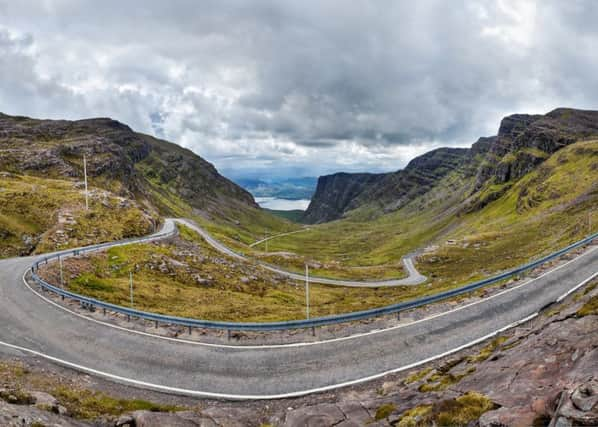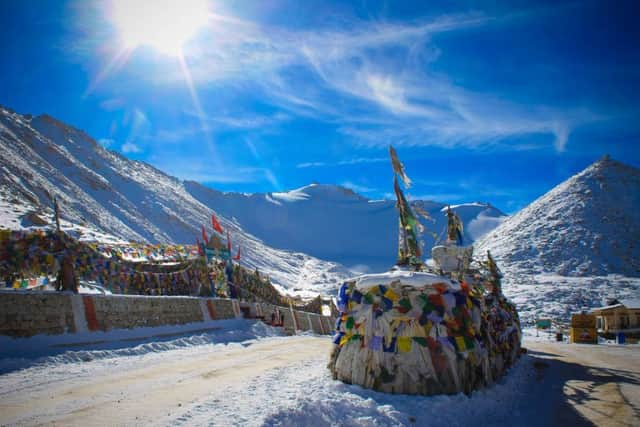Travel: The ten best cycle routes in the world


1) Bealach na Bà (Pass of the Cattle), Scotland
The awe-inspiring scenery of the Scottish Highlands can humble mere cycling mortals: the hush of still, silent roads and the enormity of the peaks are humility for the soul. A rugged trail across the mountains of the Applecross peninsula to the Bealach na Bà (Pass of the Cattle) is notable as it involves a monster 625m climb that’s notorious for its jaw-dropping views and utterly terrifying bends. The burn kicks in straight away after a short, sharp, power burst. Reaching 20 per cent at its steepest gradient, your goal is simply to survive the hairpins.
2) Munda Biddi Trail, Western Australia


Slicing through miles of thick eucalyptus trees and native bush that are home to western brush wallaby, western grey kangaroos, and brush-tail possum, the Munda Biddi cycle trail (meaning “path through the forest” in the Noongar Aboriginal language) runs from Mundaring, a suburb located 34km east of Perth on the Great Eastern Highway, to Albany, a port city in the Great Southern region of Western Australia – the longest track of its kind in the world. Conceived by the West Australian Mountain Bike Association (WAMBA) this gentle wilderness route is for cyclists of all levels. As you pedal through dark knotted forests, towering ferns and coastal plains scattered with wild flowers, the whir of gears can send feathers fluttering and balls of fur scuttling in zig-zags across the track.
3) San Juan islands, USA
Advertisement
Hide AdNorth American cyclists are no strangers to the scenic joys of the San Juan archipelago as it is just a short jaunt from the USA’s west coast. Most two-wheeled arrivals hail from Seattle and Vancouver BC keen to enjoy the islands’ quiet rural roads, long sunny days and magnificent views. Of all the islands in the archipelago, San Juan, Orcas and Lopez are perfect for exploring by bike: San Juan offers little difficulty; Orcas Island has more challenging rides; while Lopez Island has the flattest terrain. Stay inland for the gentlest rides or head to the scenic shoreline for the hilliest bike routes.
4) Bogota, Colombia


Every week more than a million cyclists take over the busiest, biggest, and most important streets of one of the most notoriously traffic-snarled metropolises in South America – Bogota. Imagine, if you can, that happening in London, New York or Panama City? Exactly. Incredible things can happen in a country where cyclists own the streets. Great civic pride and social responsibility have transformed Bogota, a place that was once a byword for violence and kidnap. For the full thrill of the city, ride Carrera Séptima end to end on a Sunday (every Sunday is car-free), from Calle 126 in the north, down through the heart of the city, all the way to Calle 20 South, then circle back up along Carrera 15, completing the full north-south loop.
5) Khardung La, India
To hit the world’s highest drivable road on 20lb of lightweight alloy is a form of insanity, yet each year several hundreds of cyclists do just this. The Khardung La in India may be just 45km long, but it is a stretch deprived of all but a lungful of oxygen: the cycling starts at 18,380ft above sea level, wedged tight against the mountain’s side. The weather is fierce, the air pitifully thin and the riding conditions perilous. As the gateway to the Shyok and Nubra valleys, the dizzying Khardung La (meaning, the Khardung Pass in Tibetan) has a formidable reputation. You’ll need stamina and courage to cope with the sheer drops and the bitterly cold face-slapping winds. Gloves are essential, for even the sweatiest palms.
6) Cameron Highlands, Malaysia
It has the clannish spirit of Scotland, a cool wet air that evokes the charm of the Welsh mountains and a panorama not unlike Sri Lanka’s tea-growing regions. Yet, the lush greenery and soaring hills of the Cameron Highlands are in the north of Malaysia: rising up to and beyond 1,600m above sea level. Named after Sir William Cameron, a British commanding officer who first surveyed and mapped the area in 1885, the climate was popular with 19th century British colonists because it felt like home. It’s cool – cold even – with lush market gardens, fertile smallholdings, tea farms and vegetable fields interspersed with tiny Orang Asli indigenous tribal villages.
7) Karura Forest, Kenya
Tucked in the midst of Nairobi’s sweltering downtown business district, amongst the embassy buildings and corporate HQs, you’ll find a bizarre 1,000-hectare pocket of green space: verdant, leafy and full of monkeys, exotic birds and colourful butterflies. Established in 1932, and managed by the Kenya Forest Service, the forest has a jumble of way-marked cycle trails that loop around waterfalls, sprouting bamboo, flower-filled marshlands, soaring trees and dozens of Mau Mau caves. These large overhanging rocks of huge historical importance were used for shielding freedom fighters from colonial forces during Kenya’s ‘Emergency Period’ (1952-1960). Today, they are used as a place to prop up your bike while you marvel at scuttling bush babies, snuffling porcupines, bush pigs, shy antelope and more than 200 species of birds.
8) Lofoten Archipelago, Norway
The Lofoten archipelago hangs off the end of Norway’s northwestern coast and is home to fishing villages, puffins and seals. Bucolic beauty and peace, plus open views, typify the laid-back character of the islands, where cyclists flock to get their fix of “off the radar” chill time along quiet asphalted trails. As the home of hundreds of sea birds, including the sea eagle, seen soaring over the clifftops all year round, Lofoten is an avian shangri-la. Trail sections and distances are relatively short with the furthest ride, from Fiskebøl to Å along the E10 around 160km.
9) The Ridgeway, England
Advertisement
Hide AdRunning from Overton Hill in Wiltshire to the curvy Chilterns in Buckinghamshire, the only downside of the 139km Ridgeway Trail is that it doesn’t offer a continuous unbroken ride. The trail becomes a walkers-only footpath at Goring, east of the River Thames so cyclists take a carefully mapped-out alternative route that follows a mix of bridleways and country lanes. Beginning close to a UNESCO World Heritage Site in Avebury in the Wiltshire countryside and ending in Streatley in Berkshire on the River Thames, first you go through rolling downlands and sun-dappled woods, passing the Neolithic barrow and chamber tomb of the Wayland’s Smithy and the prehistoric Uffington White Horse. Then you follow the legions of herdsmen, armies, farmers and merchants that have trodden an ancient trading route that truly is as old as the hills.
10) Mount Ararat, Turkey
The peaks of Mount Ararat figure in both the Christian and Islamic faith, with both religions acknowledging it as the place where Noah’s Ark came to rest. However, despite forensic searches of the area no sign of the structure has been found. Bordering Armenia and Iran, Mount Ararat is served by a road that runs to Iran through to Dogubayazit, a transit town under snowy peaks that rarely ever thaw. Cycling from the foothills takes you through soot-coloured basalt rocks the size of double-decker buses that add brooding shadows to a mountain that rises in isolation from rolling valleys. The Turks call the mountain agri dagi (mountain of pain) and Kurds, the ciyaye agiri (mountain of fire). I wonder if these names were gifted when riding across its bumps by bike?
The 50 Greatest Bike Rides of the World by Sarah Woods is published by Icon, £6.99.